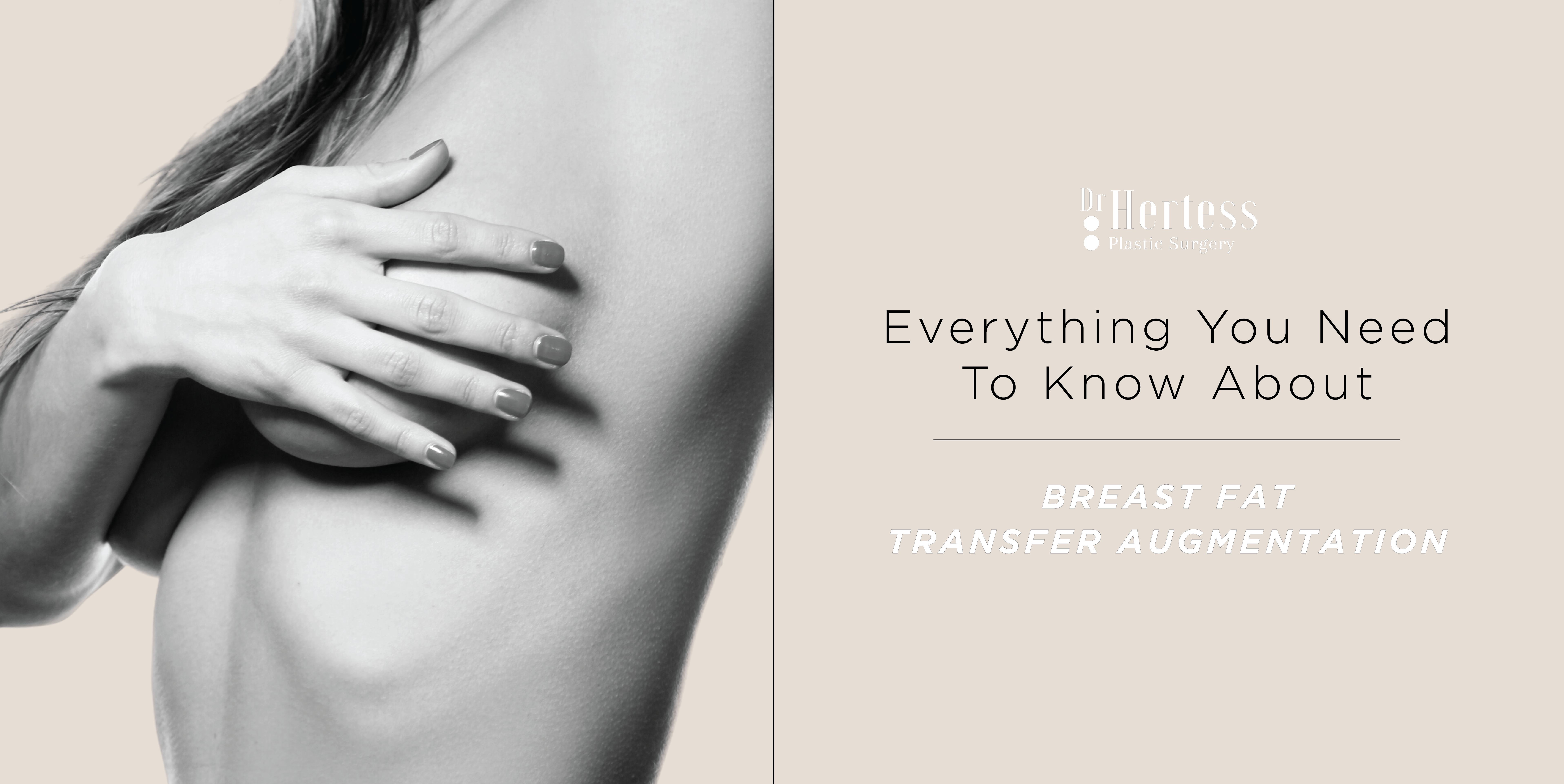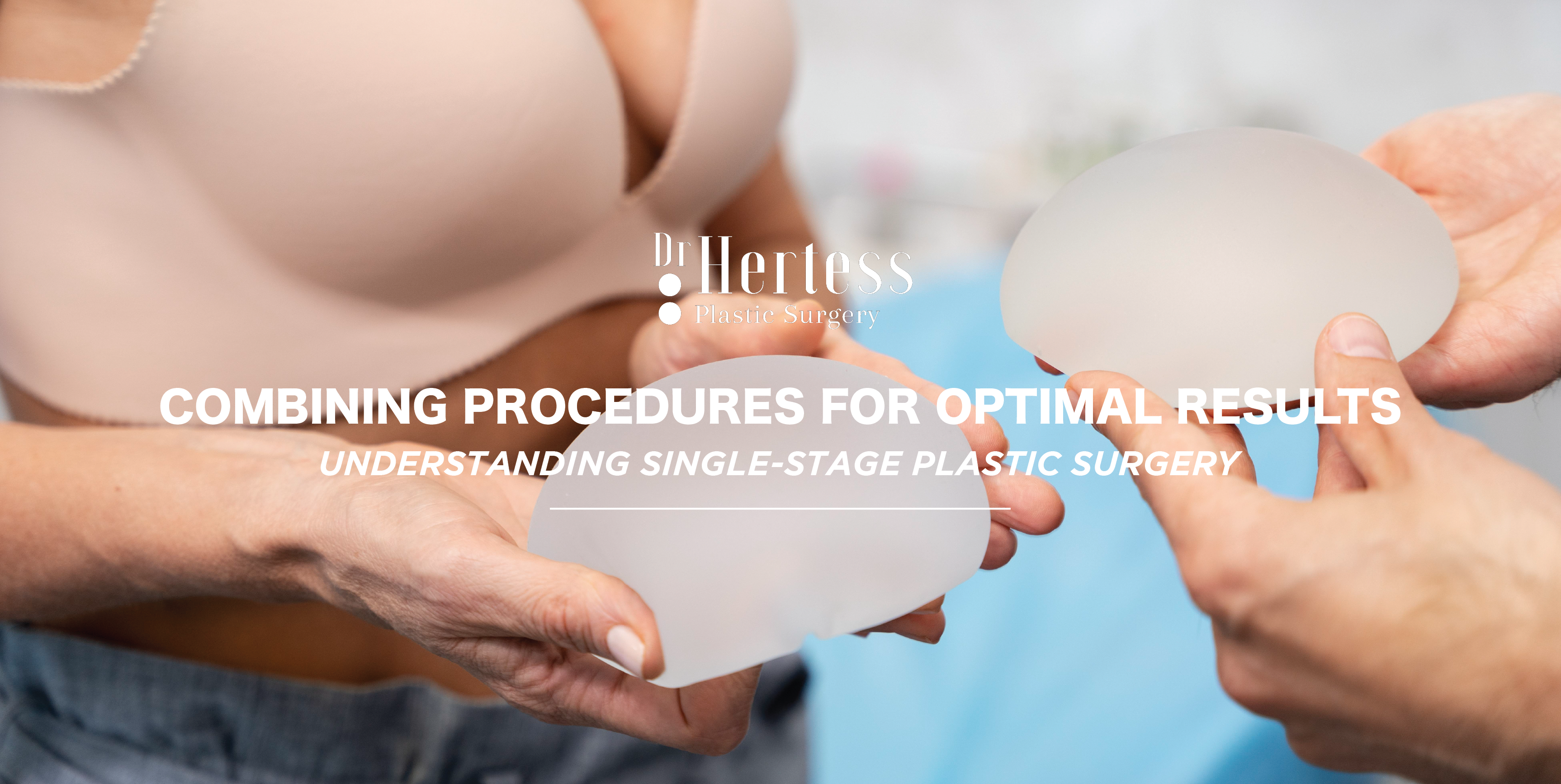Everything You Need To Know About Breast Fat Transfer | Dr Hertess Plastic Surgery

Everything You Need To Know About Breast Fat Transfer
Breast fat transfer is becoming an increasingly popular procedure for subtly contouring the breasts, improving the upper pole of the bust, or correcting imperfections like dimpling and bumpiness in the area. It can enhance breast size to a certain degree, but it’s important to note that it cannot give patients any cup size they desire. While fat transfer can add volume, it usually only provides a modest increase.
This procedure is most effective when combined with a breast lift or traditional augmentation using implants. On its own, fat transfer typically doesn't lead to significant breast enlargement, and it’s not a replacement for implants if a larger size is desired. However, it can be a great option for enhancing shape and creating a more natural, fuller look.
How does breast fat transfer work?
Breast fat transfer, also known as autologous fat transfer, involves using liposuction to remove fat from areas like the abdomen, thighs, or buttocks. The harvested fat is then purified to remove any unwanted fluids or cells, leaving behind only viable fat that will be injected into the breasts.
It’s important to note that for the procedure to be successful, the transferred fat cells need to establish a blood supply in their new location. It's common for not all of the fat cells to survive the process, but the ones that do will gradually develop a blood supply through small blood vessels. This process takes time, which is why the full results of a breast fat transfer may not be visible for several months as the fat settles and integrates with the surrounding tissue.

This patient chose to undergo two breast fat transfer procedures, resulting in a subtle increase in breast volume. Eventually, she opted for implants to further enhance her bust size.
BOOK A CONSULTATION WITH DR HERTESS
Who is a good candidate for breast fat transfer?
To be a good candidate for fat transfer breast augmentation, you should be at a healthy, stable weight with enough excess fat in areas like the abdomen, thighs, or buttocks that can be harvested for the procedure. Ideal candidates typically have a body mass index (BMI) within a normal range. It's also important to have realistic expectations, as fat transfer generally offers a modest increase in breast size, usually only one cup size.
Will I need to go to hospital for this procedure?
Yes, breast augmentation by fat graft is typically performed under general anaesthesia, meaning you will be fully asleep during the procedure, and it generally only takes a few hours. While you won't need to stay in hospital overnight, you will need someone to drive you home after the surgery, as you’ll be recovering from the anaesthesia.
Recovery will apply to two areas: the area where the fat was taken from and where liposuction was performed, and the breasts. You will experience mild discomfort after your surgery, but should be able to return to normal activities within a week.
Can I have breast fat transfer if I already have breast implants?
Yes! Patients who already have breast implants can choose to undergo fat injections in the breasts. This is often called a ‘hybrid’ approach to achieving a desired aesthetic, as the fat injections complement the already existing implants. Breast fat transfer alongside implants can also help to fill any irregularities around the existing implant and improve the overall natural look.
If your main goal is to increase your breast size significantly, you will need to discuss the removal and replacement of the old implants, as fat transfer alone won’t achieve this.
 This patient used breast fat transfer to complement the removal and replacement of her implants. The addition of fat transfer helped create a more contoured cleavage.
This patient used breast fat transfer to complement the removal and replacement of her implants. The addition of fat transfer helped create a more contoured cleavage.
BOOK A CONSULTATION WITH DR HERTESS
Are there risks associated with breast fat transfer?
All plastic and cosmetic surgery carries risk. It’s important to research all associated risks with breast fat transfer augmentation, such as:
- Fat absorption: Some fat cells can be reabsorbed by the body, potentially leading to less volume than expected.
- Irregular contours: If the fat is not evenly distributed, it can lead to lumps or uneven breast shape.
- Infection: As with any surgery, there is a risk of infection at the liposuction or injection sites.
- Fat necrosis: In some cases, the transferred fat can die, leading to the formation of hard, painful lumps in the breast tissue.
- Scarring: While the incisions for fat transfer are small, scarring can still occur at the liposuction or injection sites.
It is important to speak to your surgeon about all the potential side effects and risks associated with breast fat transfer.
Will I need breast implants as well as a breast fat transfer?
If you're looking for a significant increase in both size and shape, you will likely need to combine breast implants with breast fat transfer augmentation. Fat transfer alone generally offers only a modest increase in breast volume and is unlikely to achieve dramatic changes in size.
While fat transfer can enhance shape, improve contouring, and provide subtle volume increases, it's typically not sufficient to achieve a large cup size increase on its own. Most patients opt for fat transfer as a way to refine and subtly enhance the breasts, rather than dramatically change their size. By combining fat transfer with implants, you can achieve a more noticeable and long-lasting result in both volume and shape.
Book a consultation with Dr Hertess to discuss if breast fat transfer augmentation is the right solution for your aesthetic goals. A consultation with a well established and respected plastic surgeon like Dr Hertess is the first step on your plastic surgery journey.
BOOK YOUR CONSULTATION WITH DR HERTESS TODAY
CONTACT US



